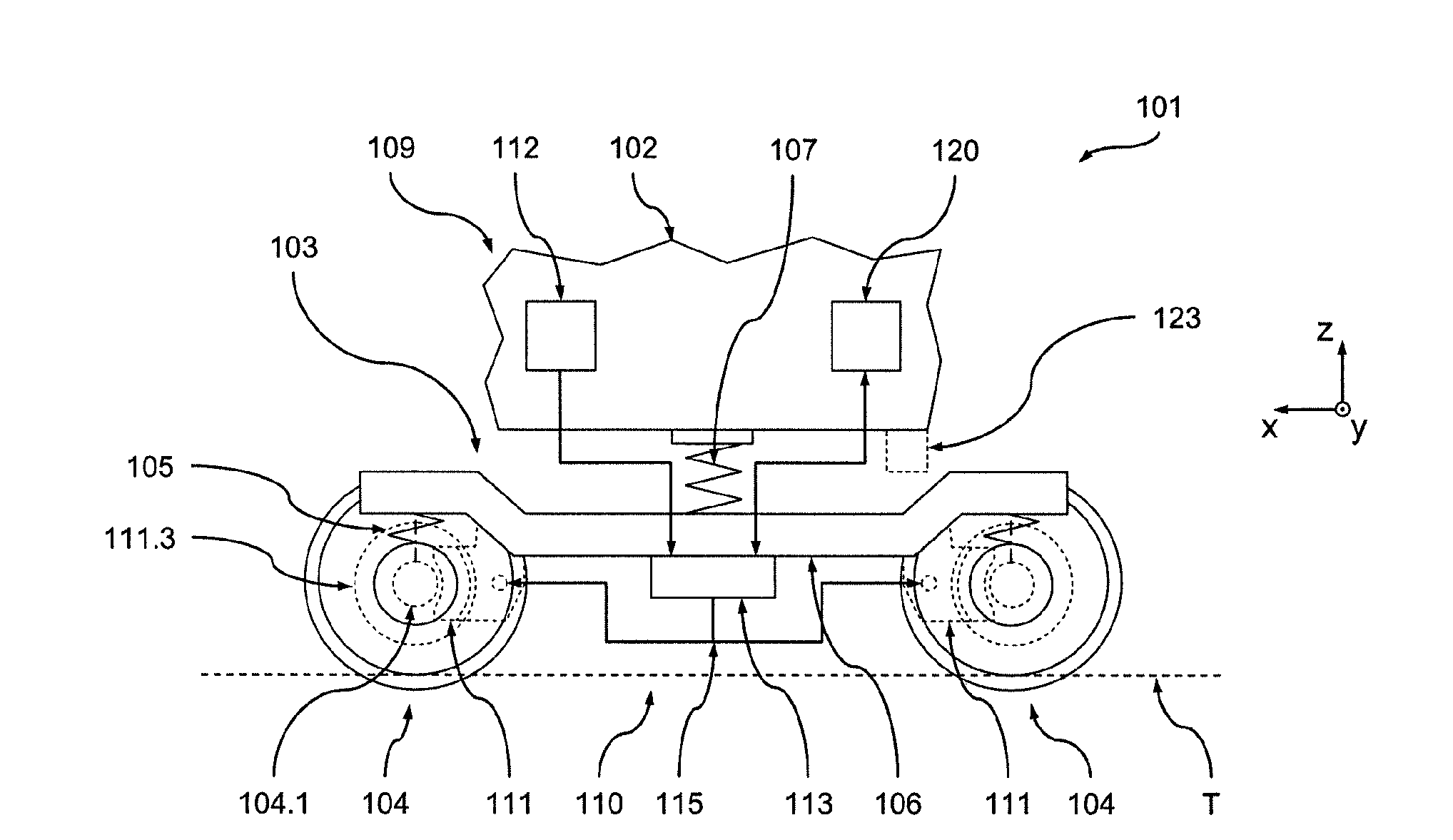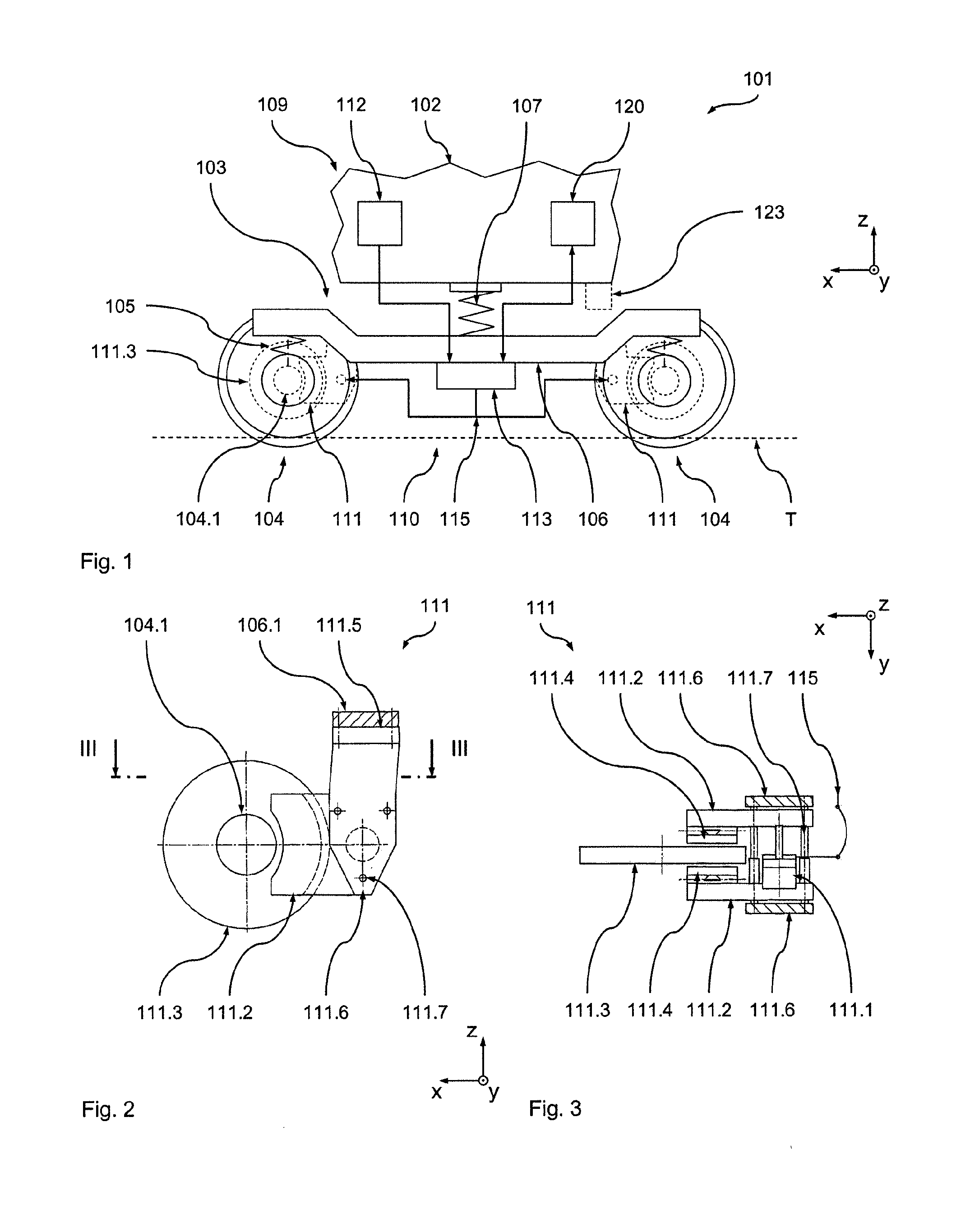Brake System for a Vehicle
a technology for brake actuators and vehicles, applied in the direction of braking systems, rotary clutches, fluid couplings, etc., can solve the problems of increasing the integration problem of braking equipment, requiring a relatively large amount of space within the running gear, and almost equally short strokes of the brake actuators over the life of friction elements, etc., to achieve compact braking, improve the safety of the operation, and simplify the approval process
- Summary
- Abstract
- Description
- Claims
- Application Information
AI Technical Summary
Benefits of technology
Problems solved by technology
Method used
Image
Examples
first embodiment
[0052]In the following, with reference to FIGS. 1 to 4 a first preferred embodiment of the vehicle according to the invention in the form of a rail vehicle 101 will be described.
[0053]The vehicle 101 comprises a wagon body 102 which is supported in the region of its two ends respectively on a running gear in the form of a bogie 103. It is understood, however, that the present invention can also be used in conjunction with other configurations in which the wagon body is supported only on one running gear.
[0054]For easier understanding of the following explanations, a vehicle coordinate system x, y, z (defined by the wheel contact plane of the bogie 103 on the rails T) is introduced in the figures, wherein the x-coordinate designates the longitudinal direction of the rail vehicle 101, the y-coordinate designates the transverse direction of the rail vehicle 101, and the z-coordinate designates the height direction of the rail vehicle 101, respectively.
[0055]The bogie 103 comprises two ...
second embodiment
[0092]In the following, a further preferred embodiment of the braking system 209 according to the invention is described with reference to FIGS. 5 and 6, which can replace the braking system 109 in the vehicle 101. The braking system 209 in its structure and functionality basically corresponds to the braking system 109, such that only the differences shall be discussed here. Similar components are thus given reference numerals elevated by the value 100. Unless deviating statements are made in the following, reference is made to the above statements concerning the characteristics and functions of these components.
[0093]The only difference of the braking system 209 to the brake system 109 lies in the design of the braking apparatus 211, which is designed as a so-called suspended shackle brake in the present example. The latter has suspended shackles 211.6 articulated to an adaptor device 211.5 of the interface flange 106.1. The suspended shackles 211.6 in turn carry the calipers 211.2...
PUM
 Login to View More
Login to View More Abstract
Description
Claims
Application Information
 Login to View More
Login to View More - R&D
- Intellectual Property
- Life Sciences
- Materials
- Tech Scout
- Unparalleled Data Quality
- Higher Quality Content
- 60% Fewer Hallucinations
Browse by: Latest US Patents, China's latest patents, Technical Efficacy Thesaurus, Application Domain, Technology Topic, Popular Technical Reports.
© 2025 PatSnap. All rights reserved.Legal|Privacy policy|Modern Slavery Act Transparency Statement|Sitemap|About US| Contact US: help@patsnap.com



